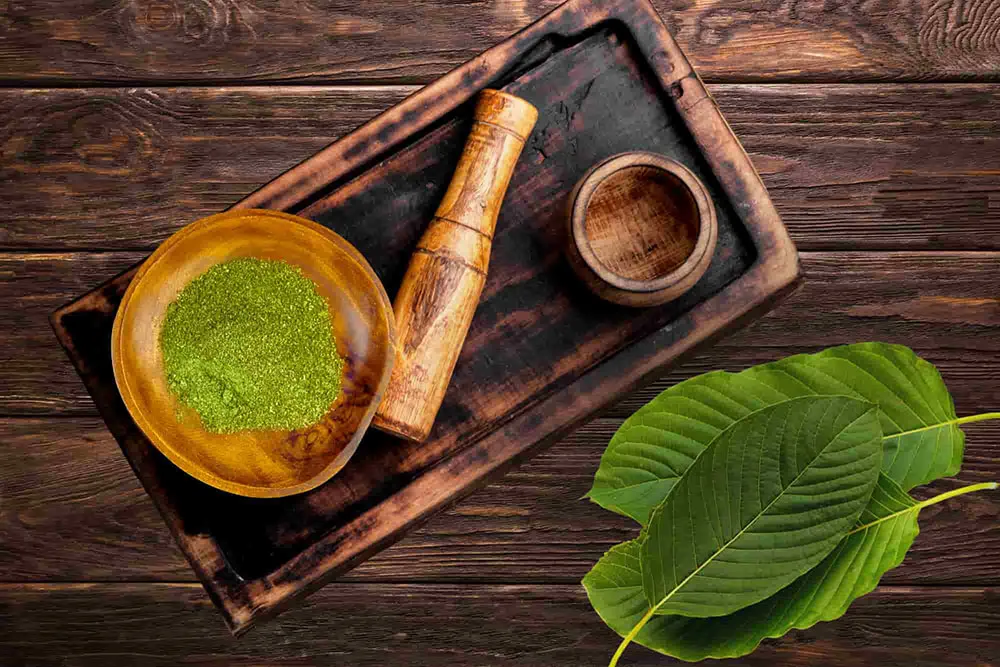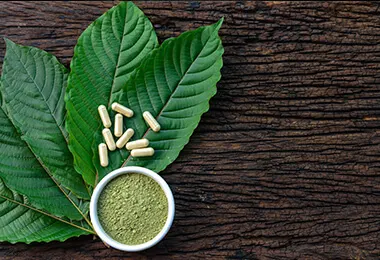
Kratom and Your Workout: Can It Help Boost Performance?
Are your gym workouts lacking that extra oomph? Do you feel incredibly drained after a challenging workout? Many health-conscious people
Kratom, scientifically known as Mitragyna speciosa, is a tropical tree which has been valued for centuries by indigenous cultures. Recently, the buzz surrounding kratom has increased its awareness and recognition globally. As kratom’s popularity increases, there has also been growing concern about how to regulate its sale and use.

To fully grasp the complexities surrounding kratom, it is essential to delve into its history and origins. By understanding the botanical background, traditional uses, and introduction to Western countries, we can better inform future research and regulation of this intriguing plant.
Different kratom strains, their effects, dosage recommendations, and tips for first-time users.Download Our
Comprehensive
Kratom Guide
Kratom is a tropical tree that belongs to the Rubiaceae family, which also includes coffee and gardenia plants. Native to several Southeast Asian countries, including Thailand, Malaysia, Indonesia, and Papua New Guinea, kratom has a long history of use in traditional medicine and cultural practices in these regions.
The kratom tree can grow up to 25 meters tall and has large, glossy green leaves that are the primary source of the plant’s active compounds. These leaves are typically harvested by hand, then dried and processed into various forms for consumption, such as powders, capsules, and extracts.
The unique alkaloid profile of kratom leaves is responsible for its effects on the human body. The two most well-studied alkaloids are mitragynine and 7-hydroxymitragynine, although numerous other alkaloids have been identified in kratom leaves. The concentration of these alkaloids can vary significantly depending on factors such as the geographical location, season, and age of the plant.
The rich kratom history in Southeast Asia, particularly in countries like Thailand, Malaysia, and Indonesia, reveals the plant’s extensive traditional use. For centuries, manual laborers in these regions have relied on kratom to combat fatigue and improve work productivity.
By chewing the fresh leaves or brewing them into a tea, workers found that kratom helped alleviate physical discomfort and provided a boost of energy to help them through long, demanding workdays.
In addition to its use as a natural energizer, kratom has also been employed in traditional medicine for various ailments. Indigenous communities have used kratom leaves to alleviate digestive issues and other medical conditions.
Kratom’s use in Southeast Asia extends beyond its medicinal properties and into the social and cultural fabric of these communities. The plant has been an integral part of social gatherings and religious ceremonies, where it is often consumed in traditional preparations such as tea. This cultural context highlights the deep-rooted relationship between kratom and the people of Southeast Asia.
Vietnam is a country known for its rich biodiversity, with over 13,000 plant species and approximately 10,000 animal species identified within its borders. This tropical region is home to many endemic species found nowhere else on the planet, as well as some of the world’s threatened species, such as Asiatic black bears and Asian elephants.
The climate in Vietnam is characterized by monsoons, heavy rainy seasons, hot and humid summers, and cold winters. The average temperature ranges from 63°F to 68°F in the coldest month and 84°F to 86°F in the hottest months.
These unique climate and soil conditions along the Mekong River in Vietnam create a particularly favorable environment for the cultivation of Mitragyna speciosa, the kratom tree. The soil in this region is rich in nutrients and minerals, providing the perfect base for these tropical evergreen trees to thrive.
Some theorize that the ultra-rich minerals and nutrients along Vietnam’s shoreline give the kratom grown in this region unique benefits and effects. As a result, Vietnam kratom has gained a reputation for its strength and rarity, with many enthusiasts eager to experience its distinctive properties.
The unique effects of kratom can be attributed to the diverse array of alkaloids found within its leaves. As mentioned earlier, the two most well-studied alkaloids are mitragynine and 7-hydroxymitragynine. Mitragynine, the primary alkaloid in kratom, has been found to interact with opioid receptors in the brain, which may explain some of the plant’s effects.
7-hydroxymitragynine, although present in lower concentrations, is believed to be stronger than mitragynine and may contribute significantly to kratom’s overall effects.
However, the alkaloid composition of kratom leaves can vary significantly depending on several factors. Research has shown that the geographical location and season can influence the concentration of alkaloids in kratom leaves.
In addition to mitragynine and 7-hydroxymitragynine, kratom leaves contain numerous other alkaloids that may contribute to the plant’s overall effects. While these other alkaloids have not been as extensively studied, they may play a role in modulating or enhancing the effects of the primary alkaloids. As research on kratom continues, it is essential to consider the complex interplay of all the active compounds found within the plant’s leaves.
In recent years, kratom exploration in Western countries has led to its growing popularity, particularly in the United States and Europe, where it is often used as a recreational substance. The increased interest in kratom can be attributed to several factors, including its purported effects on mood and energy levels, and relieving various discomforts.
Kratom products have become widely available through online vendors and local shops, making it easy for consumers to access the plant in various forms.
The internet has played a significant role in the spread of information about kratom, with users sharing their experiences and advocating for its use on social media platforms and online forums.
However, the regulatory status of kratom varies greatly between countries. In the United States, kratom is not currently regulated at the federal level, although some states have imposed bans or restrictions on its sale and use.
The (DEA) has expressed concerns about the safety of kratom and has considered classifying it as a Schedule I substance, which would effectively ban its use and possession.
In Europe, the legal status of kratom differs from country to country, with some nations prohibiting its sale and others allowing it to be sold as a dietary supplement.
Despite the growing popularity of kratom, there is still much to be learned about its pharmacology and potential applications. While anecdotal evidence suggests that kratom may be useful in promoting physical comfort and other soothing effects, more rigorous scientific research is needed to confirm these effects and determine the safety and efficacy of kratom for medicinal use.
One of the major challenges in studying kratom is the variability in product composition. The alkaloid content of kratom leaves can vary significantly based on factors such as geographical location and season. This inconsistency can make it difficult to conduct standardized research and draw definitive conclusions about the plant’s effects.
To address these challenges, future research should focus on conducting well-designed clinical trials that can provide more conclusive evidence about the potential benefits and risks of kratom use. These trials should involve standardized kratom products with known alkaloid compositions to ensure consistent results.
Additionally, long-term studies are needed to assess the safety of chronic kratom use and identify any potential adverse effects.
Kratom origins are fascinating. Its traditional uses in Southeast Asia underscore the deep connection between this remarkable plant and the communities that have relied on it for generations. As kratom gains popularity in the West, prioritizing research, regulation, and responsible use is crucial.
To ensure kratom’s sustainability and support the communities that depend on it, the industry must focus on ethical sourcing, fair trade, and sustainable farming practices. Collaboration with local farmers can help preserve kratom’s cultural heritage while meeting global demand.
Addressing the challenges of product variability and conducting standardized clinical trials are essential for understanding kratom’s pharmacology, wellness potential, and safety. Rigorous scientific research will inform decision-making by consumers, healthcare professionals, and policymakers.
Kratom’s future lies at the intersection of responsible sourcing, scientific research, regulatory clarity, and public education. By approaching this plant with respect, curiosity, and a commitment to responsible use, we can harness its potential to contribute to public health and well-being.
Elevate your nutritional journey with the Kratom
Diet, a versatile approach to wellness that emphasizes
the benefits of kratom alongside healthy eating habits.

Are your gym workouts lacking that extra oomph? Do you feel incredibly drained after a challenging workout? Many health-conscious people

From noisy gyms to quiet cafes, there’s been a buzz about mitragynine and its unique benefits. If you’ve never heard

Kratom, scientifically known as Mitragyna speciosa, is a tropical tree which has been valued for centuries by indigenous cultures. Recently,

Discover the kratom advantage and get pro tips on how to incorporate the powerful botanical into your routine.
By clicking yes you also confirm that you have read and agree to UPRISING's Terms of Service and Privacy Policy and UPRISING’s service provider’s terms of service and privacy policy.
This privacy notice discloses the privacy practices for Uprising Xtracts. This privacy notice applies solely to information collected by this website. It will notify you of the following:
We are the sole owners of the information collected on this site. We only have access to/collect information that you voluntarily give us via email or other direct contact from you. We will not sell or rent this information to anyone.
We will use your information to respond to you, regarding the reason you contacted us. We will not share your information with any third party outside of our organization, other than as necessary to fulfill your request, e.g. to ship an order.
Unless you ask us not to, we may contact you via email in the future to tell you about specials, new products or services, or changes to this privacy policy.
Your Access to and Control Over Information
You may opt out of any future contacts from us at any time. You can do the following at any time by contacting us via the email address or phone number given on our website:
We take precautions to protect your information. When you submit sensitive information via the website, your information is protected both online and offline.
Wherever we collect sensitive information (such as credit card data), that information is encrypted and transmitted to us in a secure way. You can verify this by looking for a lock icon in the address bar and looking for “https” at the beginning of the address of the Web page.
While we use encryption to protect sensitive information transmitted online, we also protect your information offline. Only employees who need the information to perform a specific job (for example, billing or customer service) are granted access to personally identifiable information. The computers/servers in which we store personally identifiable information are kept in a secure environment.
If you feel that we are not abiding by this privacy policy, you should contact us immediately via telephone at (973) 709-8202 or via email.

Discover the benefits of different kratom formats, their effects, serving size recommendations, and tips for getting the most out of your kratom experience.
Gain exclusive access to cutting-edge formulations, sales, and the latest in how to ignite your inner legend.